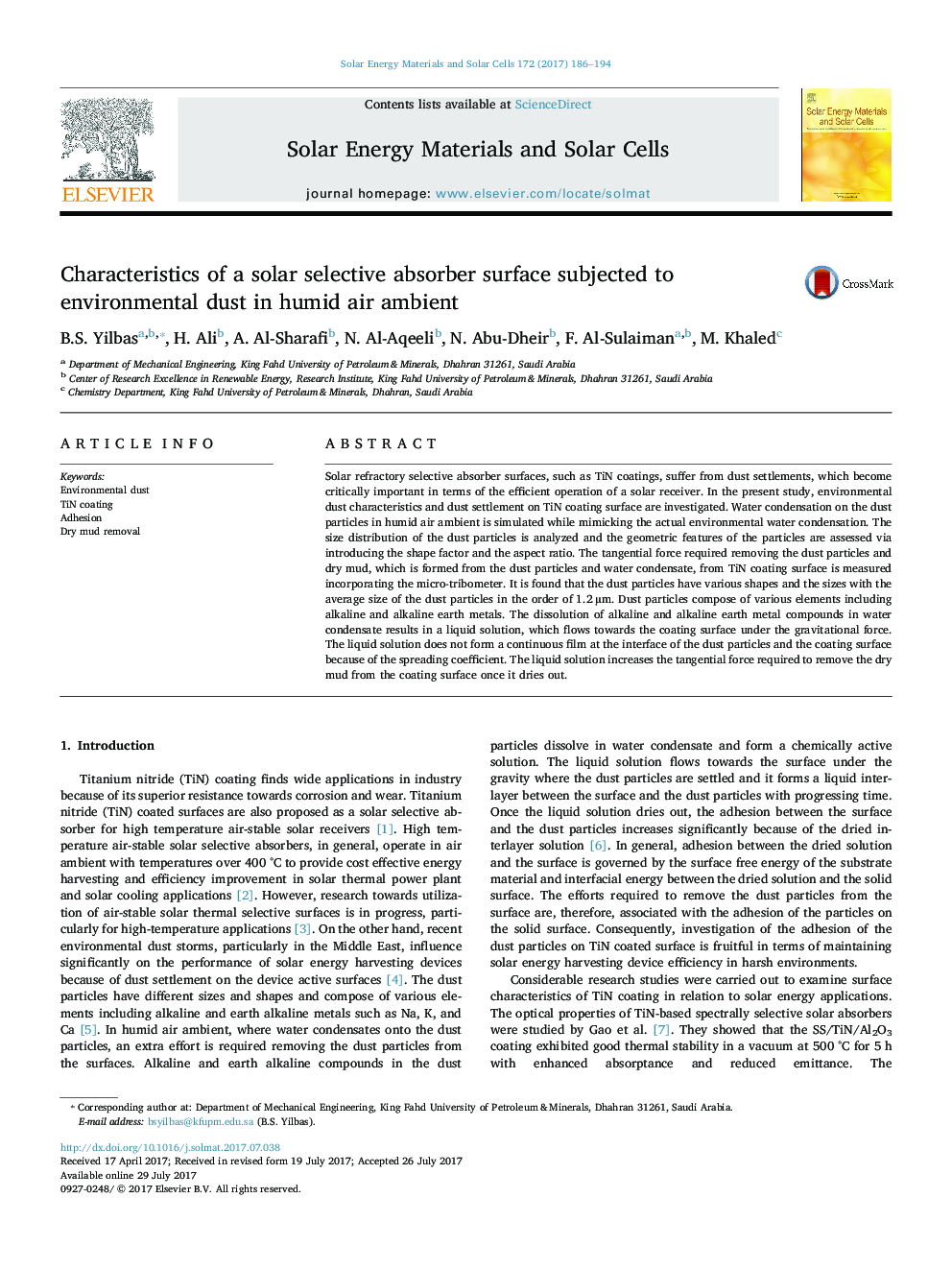| Article ID | Journal | Published Year | Pages | File Type |
|---|---|---|---|---|
| 6456915 | Solar Energy Materials and Solar Cells | 2017 | 9 Pages |
â¢Dust particles have various shapes and sizes with the average size of 1.2 m.â¢Alkaline and alkaline earth metals dissolve in water condensate and form liquid solution.â¢Spreading of liquid solution on TiN coating causes partial wetting of surface.â¢Adhesion work for dry mud removal from TiN surface is high due to dried liquid solution at interface.
Solar refractory selective absorber surfaces, such as TiN coatings, suffer from dust settlements, which become critically important in terms of the efficient operation of a solar receiver. In the present study, environmental dust characteristics and dust settlement on TiN coating surface are investigated. Water condensation on the dust particles in humid air ambient is simulated while mimicking the actual environmental water condensation. The size distribution of the dust particles is analyzed and the geometric features of the particles are assessed via introducing the shape factor and the aspect ratio. The tangential force required removing the dust particles and dry mud, which is formed from the dust particles and water condensate, from TiN coating surface is measured incorporating the micro-tribometer. It is found that the dust particles have various shapes and the sizes with the average size of the dust particles in the order of 1.2 µm. Dust particles compose of various elements including alkaline and alkaline earth metals. The dissolution of alkaline and alkaline earth metal compounds in water condensate results in a liquid solution, which flows towards the coating surface under the gravitational force. The liquid solution does not form a continuous film at the interface of the dust particles and the coating surface because of the spreading coefficient. The liquid solution increases the tangential force required to remove the dry mud from the coating surface once it dries out.
